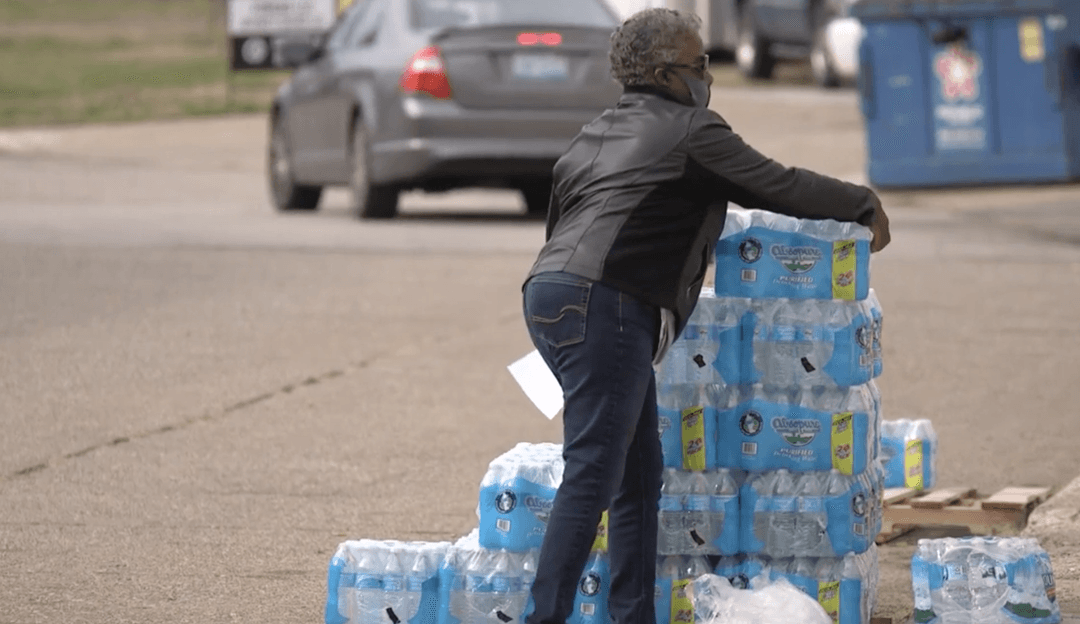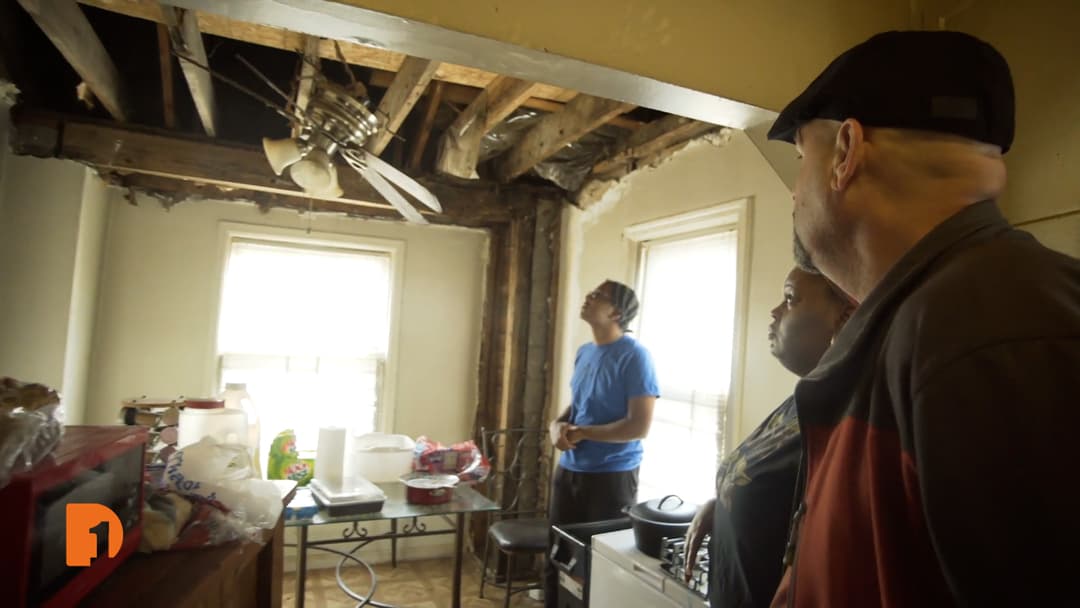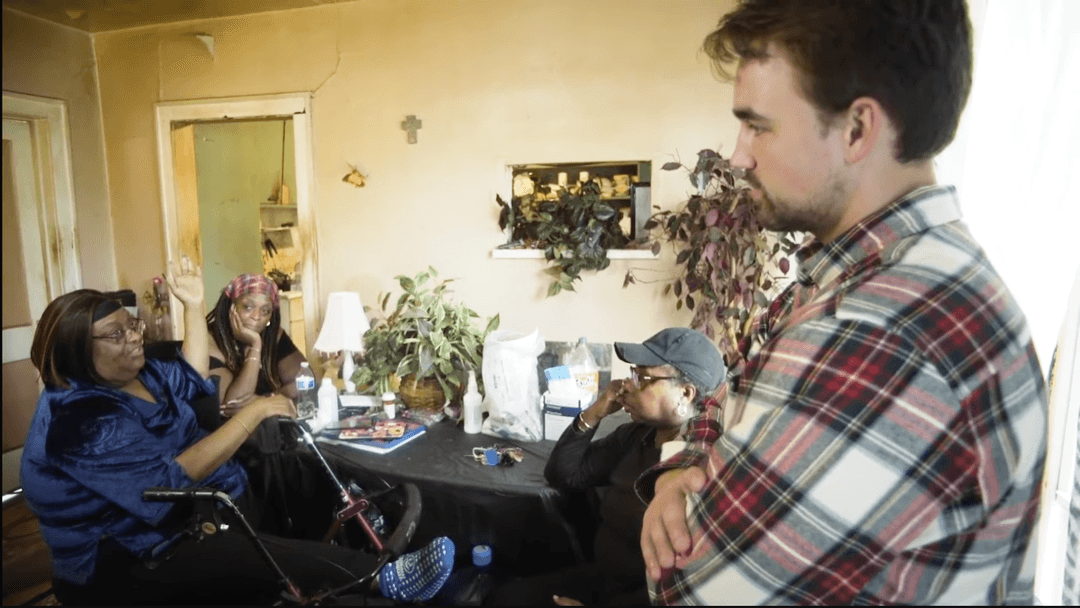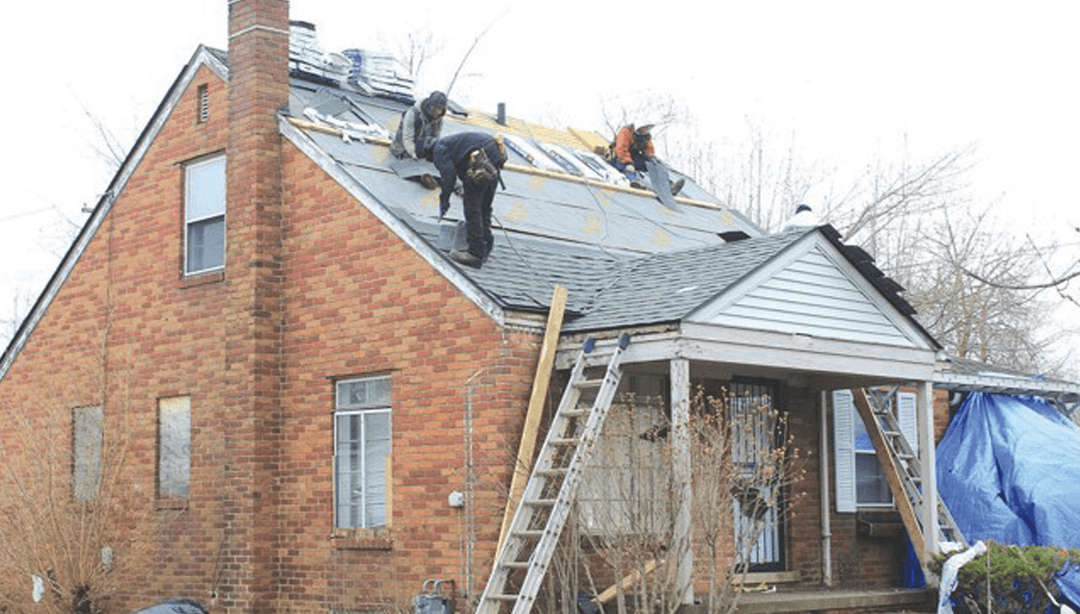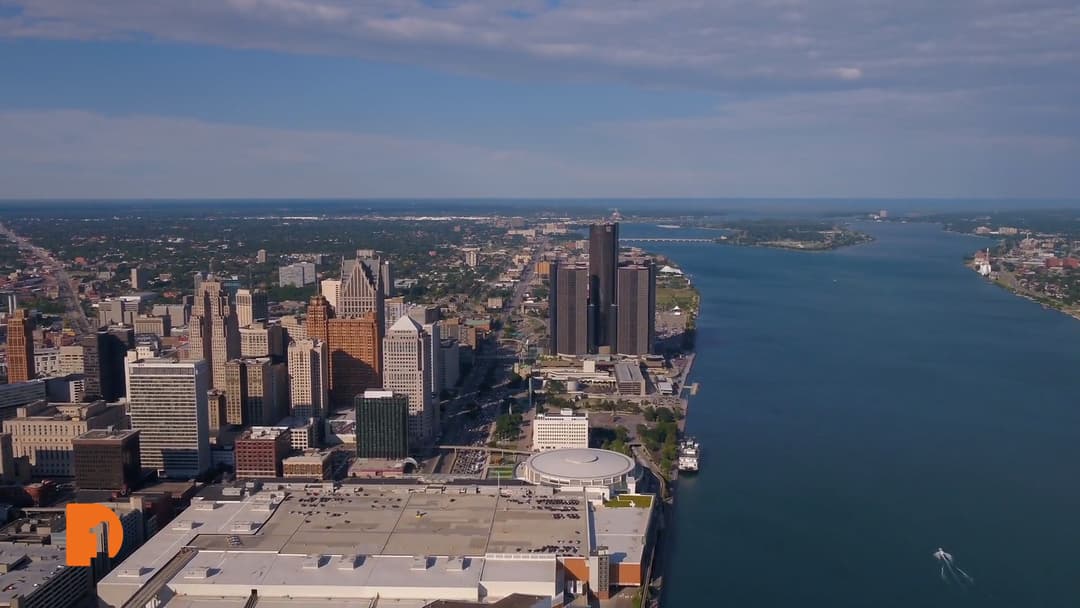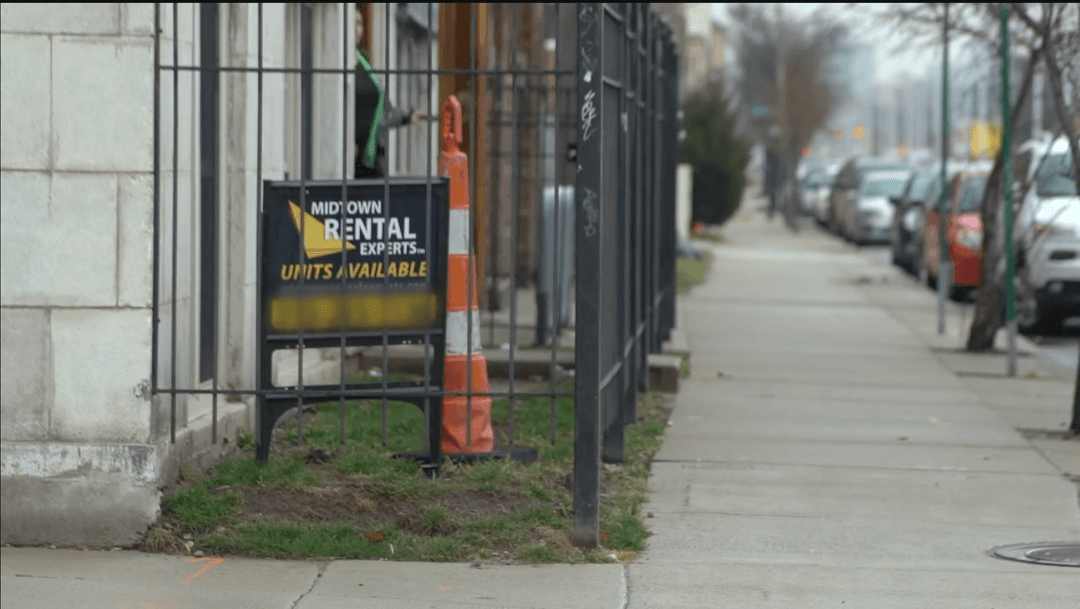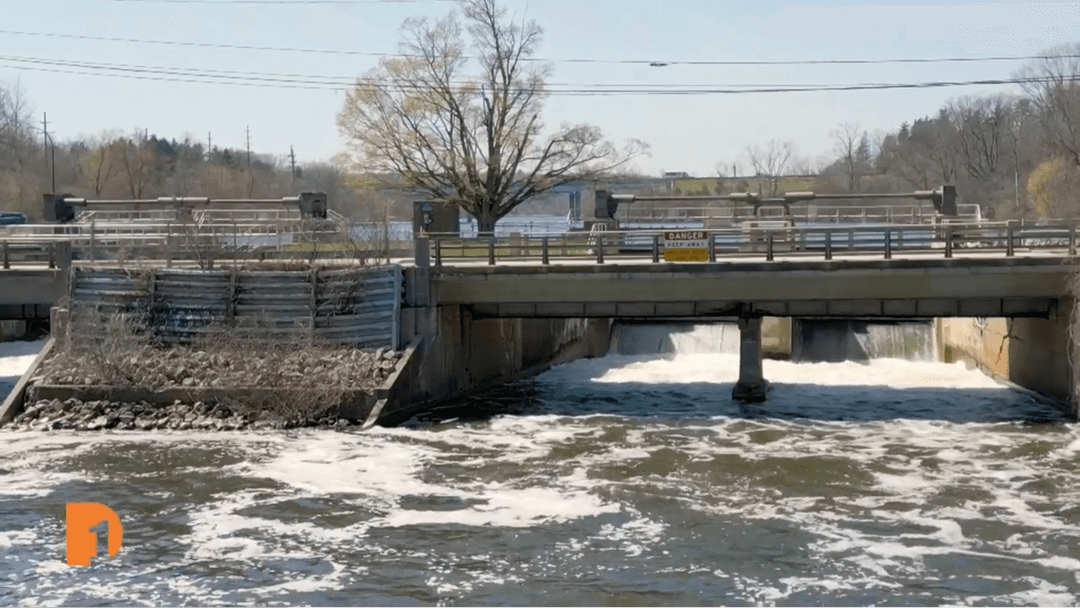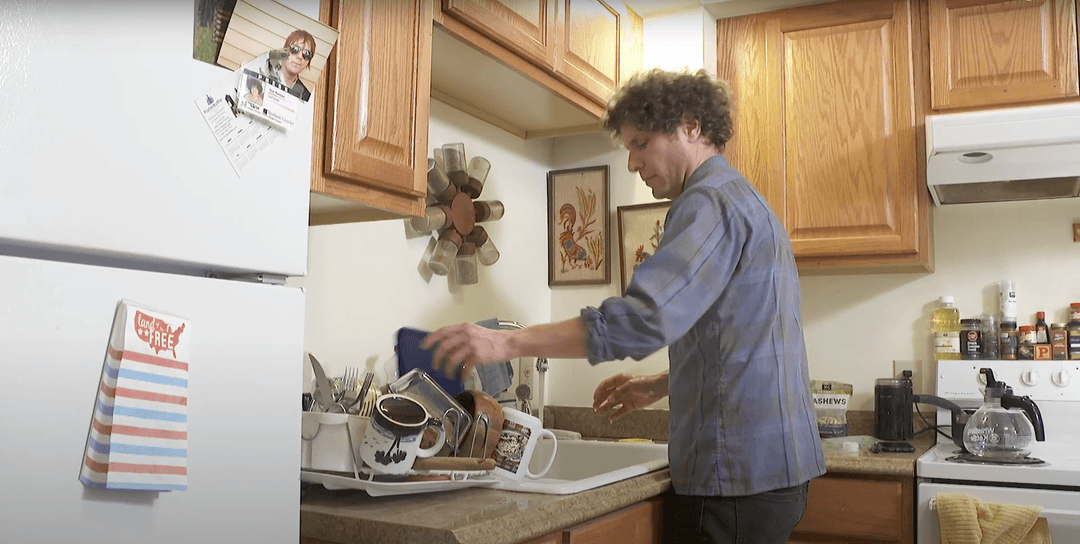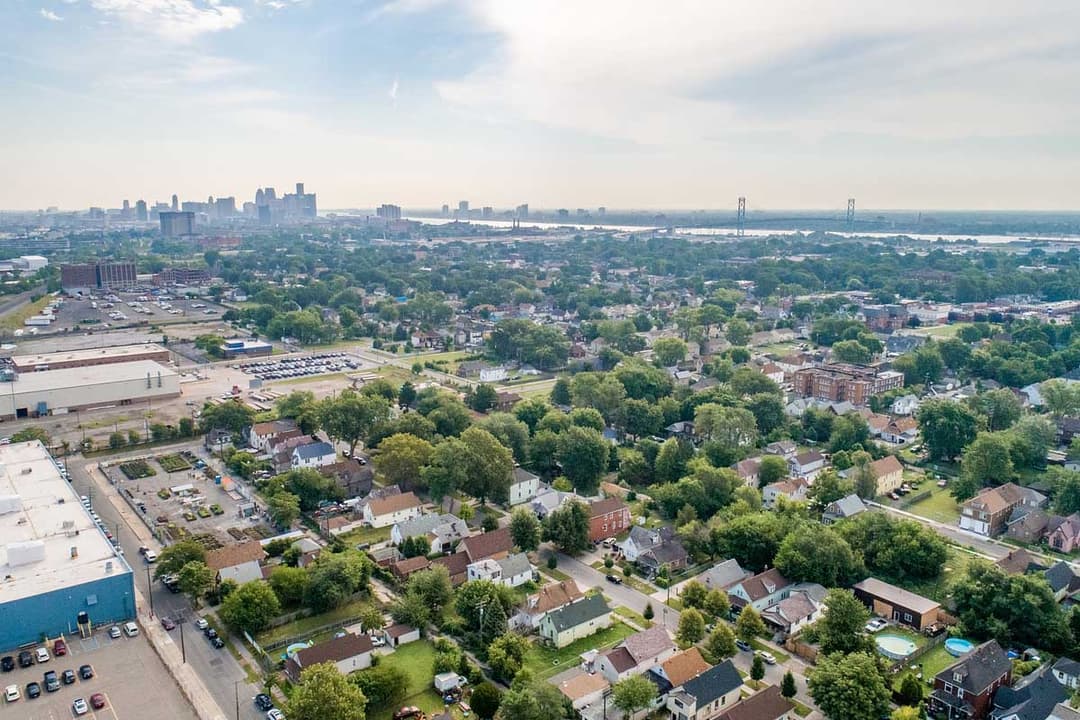Great Lakes Now | Hazardous housing: Environmental issues in older homes could lead to health issues
Jul 14, 2022
This story originally aired on Detroit Public Television’s Great Lakes Now.
Your house could be making you sick. When you think about environmental issues, you might picture toxic chemicals in the air or the water, but the environment we inhabit most of the time is our homes, and there can be problems there, too.
RELATED: Great Lakes Now | Mapping the Great Lakes: How Old Are our Cities?
RELATED: Great Lakes Now | When Your Home Is Filled With Hazards, What Can You Do?
Some of these issues are because of the aging housing stock. In Detroit, for example, 80 percent of housing units were built before 1960, meaning older windows, lead paint, and aging heating and cooling systems are becoming big problems. Other issues, like damaged roofs or flooded basements, can lead to mold and chronic respiratory issues for the people living in these homes.
RELATED: Great Lakes Now | To Protect People in the Great Lakes Region From Climate Extremes, Weatherize Their Homes
Join environmental journalist Nina Ignaczak for a look at the environmental justice efforts happening in cities like Detroit. Nina takes us inside the home of Thomasenia Weston, a longtime Detroit resident living with environmental issues in her home on the city’s southwest side. Plus, gain insights and perspective from a Detroiter who created a community and climate-focused consulting firm, as well as a physician who thinks about housing as a vital piece of public health.
Full Transcript:
Anna Sysling, Producer, Great Lakes Now: Housing stock in Great Lakes cities is aging. And in Detroit, 80% of housing units were built before 1960. So it’s no surprise that things like old windows, lead paint and aging, and heating and cooling systems are becoming a big problem for residents and the planet.
It’s something journalist Nina Ignaczak has been thinking about. Last year she co-wrote a piece for Outlier Media about the intersection of Detroit housing and environmental issues.
Nina Ignaczak, Environmental Journalist: What we came to discover through reporting, especially on issues like asthma, is that housing is as much of an environmental health issue and an environmental stressor to Detroiters as much as air pollution and water quality.
Anna Sysling: Some of the most common and dangerous issues in these old homes are lead paint and lead water service lines. Lead can create a variety of neurological and developmental issues, particularly in children. Other issues like damaged roofs or flooded basements can lead to mold and chronic respiratory issues like asthma.
Thomasenia Westin, Resident of Southwest Detroit: We all have asthma because of the basement, has mold and mildew in it.
Anna Sysling: Thomasenia Westin lives on the southwest side of Detroit with her grandchildren. She’s been in her home for more than 20 years and has experienced a variety of issues that illustrate the many ways our homes and the areas surrounding them can become a threat to our health.
Thomasenia Westin: I don’t get much sleep. You know, once you’re woken up, you’re woken up. It’s not like you just like go back to sleep. And, you know, the crazy, crazy thing about it is, is the house shakes. My bed shakes, because of the rumbling of the trunks. And when it’s like a bunch of them, you think you’re on a rollercoaster ride.
Anna Sysling: Thomasenia says she suffered some hearing loss and a constant ringing in her ears called tinnitus as a result of the constant truck traffic just outside her home.
Thomasenia Westin: It’s awful and it’s making my quality of life crap.
Anna Sysling: Another issue with old housing stock is old windows and insufficient insulation, leading to high energy bills and in some cases, dangerous indoor temperatures.
Jalonne White-Newsome, CEO & Founder, Empowering a Green Environment and Economy LLC: Climate change has these, you know, multitude of effects. But extreme heat was the one that really brought me into this space of climate change research, basically, because my grandparents were experiencing it firsthand.
Speaker 1: Jalonne White-Newsome is a native Detroiter and the CEO and founder of Empowering a Green Environment and Economy LLC, a community and climate-focused consulting firm.
Jalonne White-Newsome: My parents have been in a home that unfortunately has suffered flooding five times in the last three years. And it’s not just a little bit of water, sprinkle of water in the basement, but it’s been feet. Up to eight or nine feet of water in their basement.
Jalonne White-Newsome: And so when I think about how climate change is impacting me personally and the lives of my family members, it has caused stress. It has caused health issues. It has caused for them to have the need to relocate and really be displaced from their home. It’s been a financial strain. All of those things.
Anna Sysling: And the data reveals a disturbing trend. Housing-related health problems tend to be most severe in low-income communities of color, meaning that this is an environmental justice issue.
Nina Ignaczak: So we know that the practice of redlining, which concentrated poor people, poor, low income, predominantly people of color into certain areas, created areas of disinvestment. And those areas were disinvested, in terms of maintenance of the homes, in terms of lack of attention to neighborhood amenities like trees.
Nina Ignaczak: They also tended to be places that were easy to put roads through and highways through. And so the people living in these areas have just had to deal with multiple environmental stressors. All of these things just kind of pile up and create a very unhealthy environment.
Jalonne White-Newsome: You have people living in communities that don’t have clean air, don’t have clean water, and they are actually not healthy places to be. And so when you talk about environmental justice, to me it’s the goal or the aspiration because we all want to live in an environment that is healthy, that’s safe and clean.
Jalonne White-Newsome: And so environmental justice is that movement of people, that grassroots movement of people, regular citizens, regular folks that are saying, I’m not going to tolerate this anymore. So we need to change our laws. We need to change our practices. We want to demand an environment that we can be healthy in.
Anna Sysling: Dr. Ijeoma Nnodim Opara is an assistant professor of internal medicine and pediatrics at Wayne State University School of Medicine in Detroit. She’s a physician and an advocate for health equity.
Dr. Ijeoma Nnodim Opara, Assistant Professor of Internal Medicine and Pediatrics, Wayne State University School of Medicine: We know that when we are in homes that are not protected against those toxins, folks experience either new illnesses or if they have illnesses, those illnesses are worsened. We know and studies show that when you have a healthy neighborhood, first of all, when your house is part of a neighborhood and a community with strong cohesion, where folks are together, working together, that folks are healthier in those places.
Dr. Ijeoma Nnodim: And so that becomes very, very key. When you have a place where a neighborhood or community where you have homes that are old and not maintained and you have folks that are falling ill, that impacts upon the health and wellness of everybody in that area. As a matter of fact.
Dr. Ijeoma Nnodim: So healthy communities, healthy neighborhoods, folks who are in a stable, affordable, well-maintained homes are really key to building a healthy society that can prosper and thrive. It’s all interconnected.
Anna Sysling: In the summer of 2021, Detroiters were surveyed about how the city should spend $426 million dollars in federal funds that it would receive for community investment under the American Rescue Plan Act. Their top choice Rebuild our neighborhoods.
Later that year, the city created Renew Detroit, an initiative that will use $30 million dollars in federal ARPA funds to pay for critical home repairs. Other cities also plan to use ARPA funds to address problems with aging homes. It’s a big step, but the cost to correct the problem is huge.
Nina Ignaczak: Michigan Poverty Solutions, which is a think tank out of the University of Michigan in Ann Arbor set the cost at bringing every home in the metro area up to a healthy standard at 2 billion. So it would, the cost is as much or more as it would cost to fix our water infrastructure, for example. It’s a massive, massive cost.
Stay Connected
Subscribe to One Detroit’s YouTube Channel & Don’t miss One Detroit Mondays and Thursdays at 7:30 p.m. on Detroit PBS, WTVS-Channel 56.
Catch the daily conversations on our website, Facebook, Twitter @DPTVOneDetroit, and Instagram @One.Detroit
View Past Episodes >
Watch One Detroit every Monday and Thursday at 7:30 p.m. ET on Detroit Public TV on Detroit Public TV, WTVS-Channel 56.
Stay Connected
Subscribe to One Detroit’s YouTube Channel and don’t miss One Detroit on Thursdays at 7:30 p.m. and Sundays at 9 a.m. on Detroit PBS, WTVS-Channel 56.
Catch the daily conversations on our website, Facebook, Twitter @OneDetroit_PBS, and Instagram @One.Detroit
Related Posts
Leave a Reply
Your email address will not be published. Required fields are marked*




